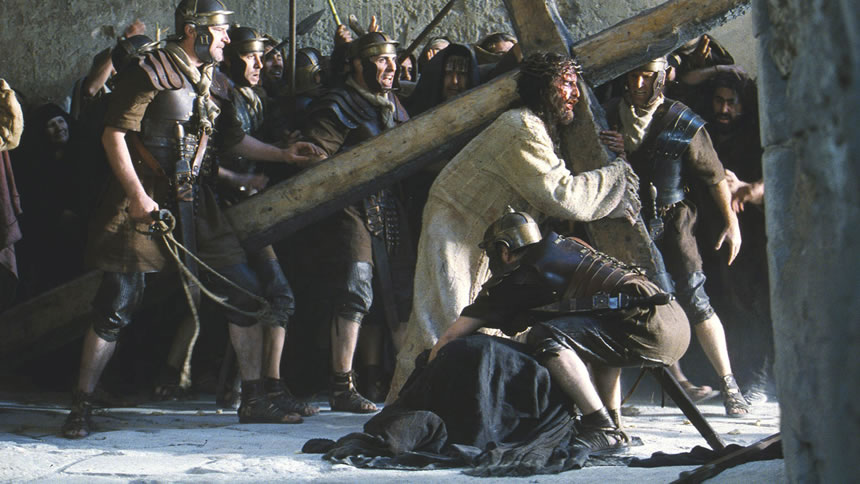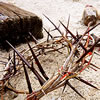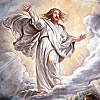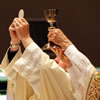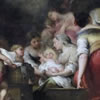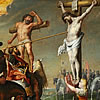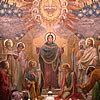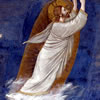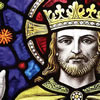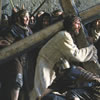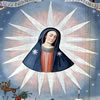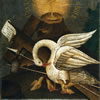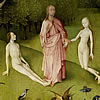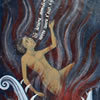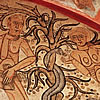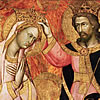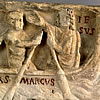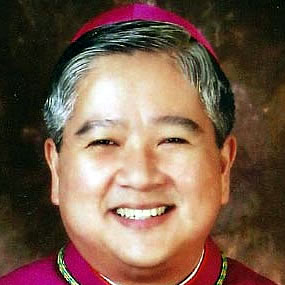Inside The Passion of the Christ - Part 2/3
This is the second installment of a three-part series explaining non-scriptural scenes that appear in the film The Passion of the Christ. In this second part, we will re-view scenes after the scourging until the Way of the Cross.
You may read PART 1 first before continuing.
Jesus in the Dungeon of Caiaphas
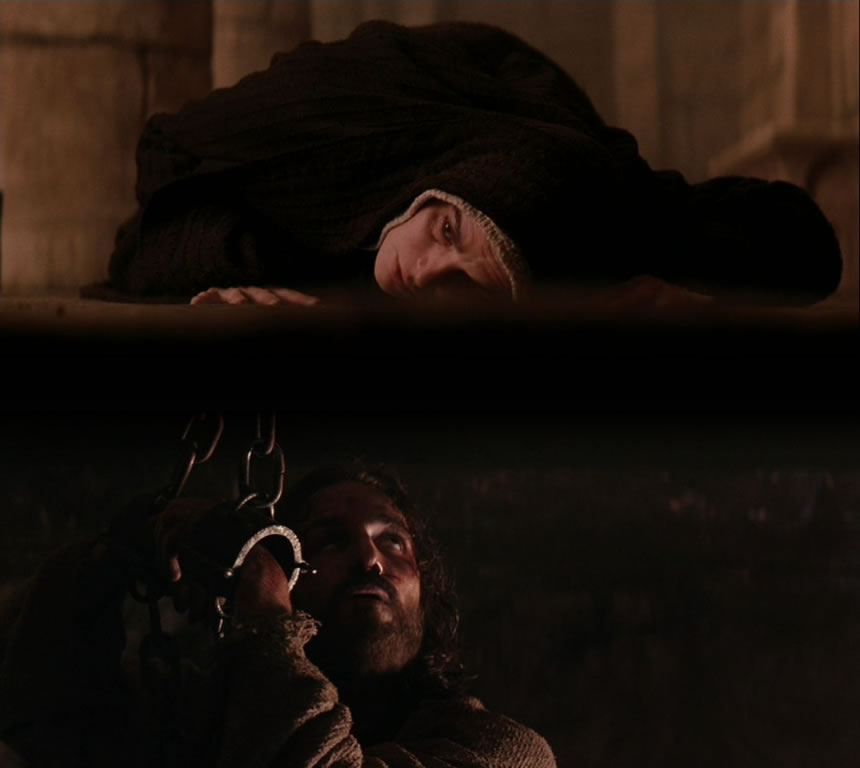
There is no Gospel verse that records Jesus being kept in the dungeon of Caiaphas, however, it does make sense that he must have been kept somewhere in the night prior to being brought before Pilate. The Church of Peter in Gallicantu in Jerusalem is said to have been built on top of the High Priest Caiaphas’s house. There is a rooster on the roof that is a memorial of Peter’s threefold betrayal“before the cock crows" which is believed to have happened there too.
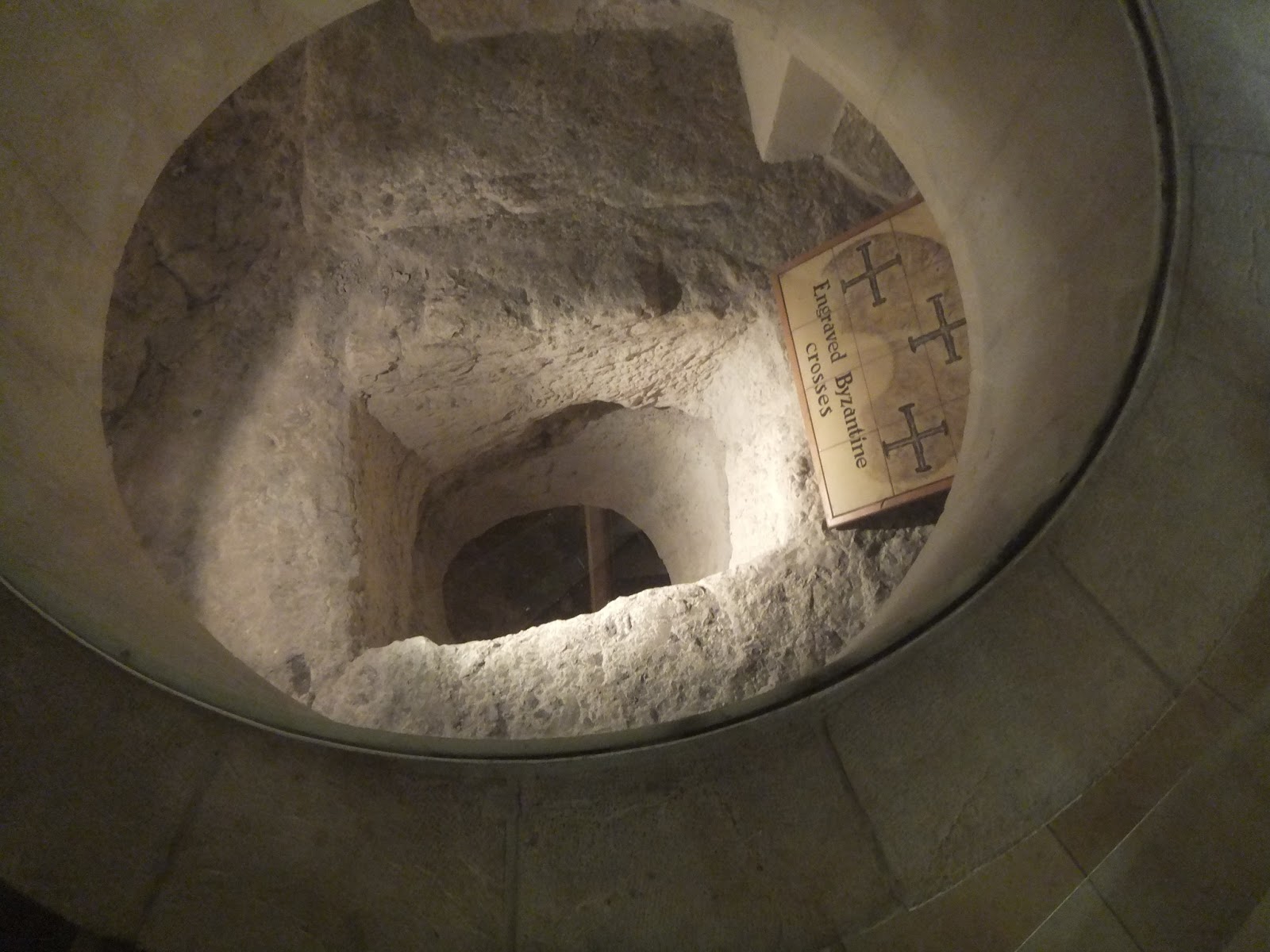 Beneath the Church is a dungeon that is believed to have been used to hold Christ for this purpose. The place is so small and dark that there is barely any room to move. In its original state, there were no stairs, and that meant the prisoner had to be lowered by rope or chains, and taken out the same way.
Beneath the Church is a dungeon that is believed to have been used to hold Christ for this purpose. The place is so small and dark that there is barely any room to move. In its original state, there were no stairs, and that meant the prisoner had to be lowered by rope or chains, and taken out the same way.
The film includes a scene where Jesus is held overnight in such a space. That isn’t the surprising thing about the scene. What is is that Mary roams around the house and seems to know where her son is kept. She looks down at the floor to where he is while he looks up to where she is. Although this isn’t scriptural, the scene was included to show us Mary’s intimacy in her participation in her son’s Passion. Catholics believe that she wasn’t just a vessel used to squirt out the Son of God. Instead, her participation was consensual and planned. If the fall was caused by Adam and Eve, a man and woman; so too, must a man and woman undo it through obedience. When Mary was asked to be the Mother of the Messiah, she accepted it even if she was betrothed to Joseph (in those times considered as a husband already). If her son did not belong to Joseph, it would look like she was an adulterer whose punishment is stoning to death. Her obedience, therefore, came at jeopardy to her life. It was a risk she took in order to be in union with God’s plan, and in this scene we see her continuous participation in that plan.
My Heart is Ready
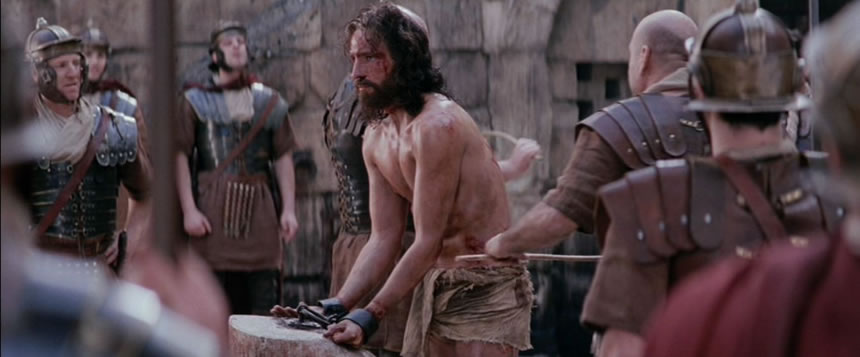
The Red Letter Edition of the King James version of the Bible prints in red all the words Jesus spoke himself. However in the movie, just before the soldiers are about to scourge him, he utters:“My heart is ready, O God; my heart is ready.” This, of course, is not a“red letter" quote. So why add it in this scene?
Firstly, the quote is from Psalm 57:
Have mercy in me, O God, have mercy on me;
for my soul trusts in you.
And in the Shadow of your wings will I seek refuge, until harm pass away.I will cry to God the most High; to God who provides for me.
He has sent help from heaven and delivered me;
he has shamed those who trample upon me.God has sent his mercy and his truth,
and he has delivered my soul from the midst of young lions.I slept troubled.
The son of men, whose teeth are weapons and arrows,
and their tongue a sharpened sword.Be exalted over the heavens, God.
May your glory appear all above all the earth.They prepared a trap for my feet; and they bowed down my soul.
They dug a pit before me. May they fall into it themselves.My heart is ready, O God; my heart is ready;
I will sing, and rehearse a psalm.Arise , O my soul; arise lyre and harp.
I will wake the dawn.I will praise you among the people, Lord;
I will chant your praise among the nations.For your mercy towers to the heavens;
and your faithfulness reaches to the skies.Be exalted above the heavens, O God;
and may your glory appear above all the earth.
It is interesting to include a part of this psalm in the scene, but it makes sense because Christ also uses the opening of Psalm 22 to help the Jews see themselves. When while hanging on the cross Jesus says, "My God, my God, why have you abandoned me?" the Jews, who would have known scripture, would remember the rest of the psalm, which includes verses like: "if he loves him, let him rescue him" (something the Jews did say), "As dry as a potsherd is my throat" (reminds us of "I am thirsty"), "they have pierced my hands and my feet" (a clear description of crucifixion), and "they divide my garments among them; for my clothing they cast lots" (the words that unmistakeably make the psalm a foreshadowing of the crucifixion scene.)
With these words, we too, are reminded of the rest of that psalm as an expression of what is in Christ’s heart – to do the will of the Father even at great cost. Interesting is that Caiaphas and the other priests hear him say this, but do not “see.”
Claudia and the Linen
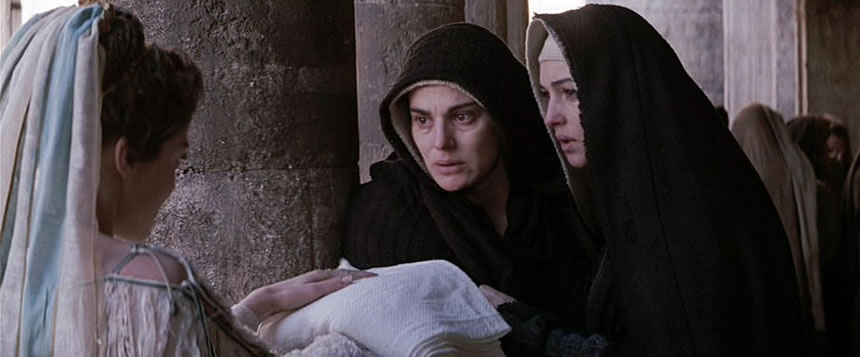
The wife of Pilate, Claudia Procles, had been telling him to have nothing to do with Jesus because she had a really bad dream about it. Despite this, it seemed Pilate fell into the verbal trap of the Sanhedrin and ended up having Jesus scourged. In the scene where Jesus is being brutally flogged, we see Claudia seek out a distraught Mary and Mary Magdalene to give them linen.
The scripture doesn’t record this scene, and it is odd at best unless we try to understand it. At this point in the Passion, Pilate has not yet condemned Christ. He was only to be brutally flogged because Pilate thought this might appease the Jews. So at this point, no one knew Christ was going to be crucified. So it does make sense that Claudia is offering linen sheets to bind the wounds of Christ. So although Claudia cannot do anything about the flagellation, she offers linen as a means of healing.
Mary Wipes the Blood of Christ
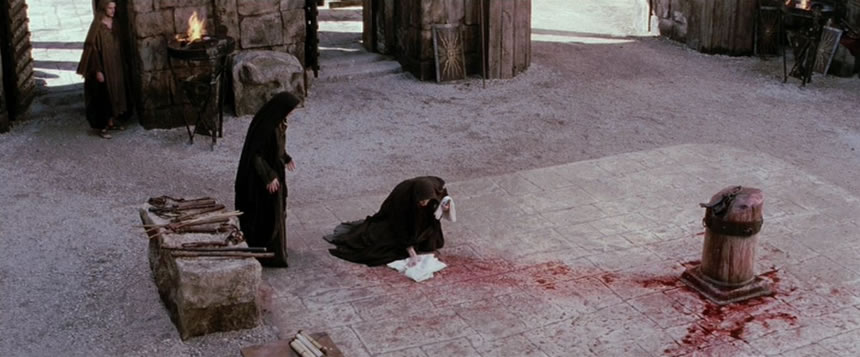
When the scourging is done and Christ is taken back to Pilate to be presented to the Jews, Mary, Mary Magdalene, and John stay in the courtyard. The two women use the linen that was given to them by Claudia Procles to wipe the blood of Christ that stains the ground.
This is another scene that isn’t supported by scripture, but it is in the movie for a reason. Apparently, it was the duty of Jewish priests to wipe the blood of the temple sacrifices. Sacrifice was on-going in the temple and it was said you could smell Jerusalem before you could see it because of the many sacrifices being made in the temple. This practice is carried on in Catholic worship as well. If you watch the priest during mass, before he puts away the chalice, he wipes it with a piece of cloth. He is, in fact, wiping the blood of Christ that was just offered as a sacrifice to the Father.
So the scene is included to remind us that Christ is the bridge between the Old Covenant and the New Covenant wherein we no longer sacrifice bulls, but Christ himself who is the most perfect sacrifice.
Mary: True and Holy Mother
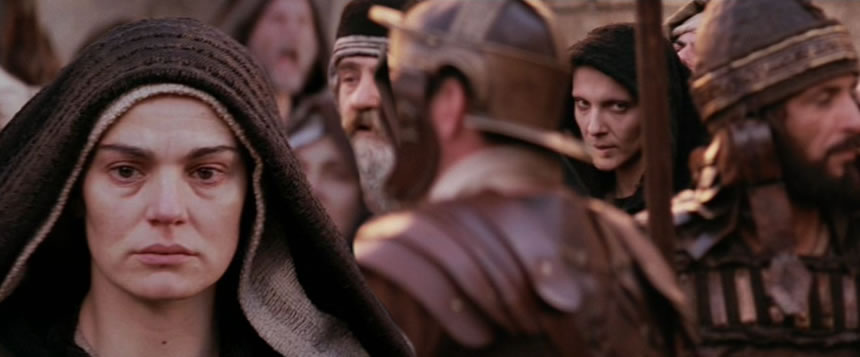
When the condemned criminals are led to the street, Satan makes an appearance. No one seems to see him (her?) not even Jesus. But in this scene, Mary locks her gaze on her as if playing the game of blink where whoever blinks first loses. In this particular“game" Satan looks away first as if a sudden realization comes upon him that he might not be winning after all.
Satan seems to know that there is something different in Mary. She must be made of something else to be able to“see" him when others don’t. It is her holiness of course that is different from all created humans. Catholics believe she was conceived without the stain of original sin. Adam and Eve were created holy – that is blameless in the eyes of God – and thus in union with him to the extent that they shared his divine life. When they committed the first sin, they lost that. And that nature was passed down to all generations. However, to prepare a womb worthy to carry God the Son for nine months, the woman should have no stain of sin whatsoever – not even original sin. Any stain of sin would mean that that person was under the power of the devil – that unholy creature. So it would be utterly absurd if the Holy Son of God would be born of a mother that was under the power of an unholy creature. No way! So through the same merits of Christ’s redeeming actions of his passion, death, and resurrection, God – because he can do it – applied them to Mary. So, because Mary is a“new creation" or like a new Eve before the fall, she is also in union with God whose divine nature is shared with her. This must have shone brightly for Satan to notice.
Mary stares him down as if putting him in his place. Some people have a notion that the forces of good and evil are equally battling it out. It is as if one camp belongs to the God of good, and the opposing camp belongs to the god of evil. That is nonsense of course. God is almighty and infinite, and Satan is only a broken finite creature that can do only what God allows him to do. So the fight is not exactly equal: God will win, of course. He has seen it and has proclaimed it in the Book of Revelation where all people of creation are citizens of a New Jerusalem. When Mary stares him down, it is a metaphor for good winning over evil in the end – even if it evil seems to be winning at the moment.
Mary might be immaculately conceived, but she is a mother nonetheless. She never lost her motherly instincts. She wants to get closer to her son as he carries the cross. John knows an alleyway and leads her there. As she loses sight of Jesus it temporarily distances her from the horror of the passion. Through a flashback, she remembers a time when the child Jesus accidentally falls and she runs to his aid. The flashback is interrupted when we are transported back to the grisly reality of what is happening. Because of the weight of the cross, Christ falls, and Mary instinctively runs to his aid once again.
It is one of the scenes that is sure to bring tears to our eyes. The scene is effective because we know how a mother can have unconditional love for their children. This reveals to us what kind of love Mary had for Jesus, her son.
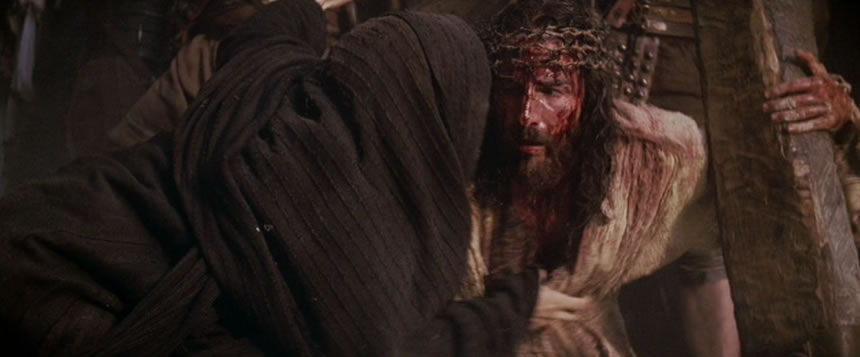
She comes running saying, "I’m here. I’m here.” And that is all Christ needed to know that someone was with him sharing his passion. To this Christ answers: "Behold, Mother, I make all things new.” These are all non-scriptural texts, but it explains Christ’s mission and puts a“bookend" to this series of scenes.
It is a bookend because the phrase first refers to God’s promise to create“a new heaven and a new earth" through Isaiah (Isaiah 65:17). It also refers to the last book of the Bible, Book of Revelation 21:5:“The one who sat on the throne said,“Behold, I make all things new.” This was said in reference to a new heaven and a new earth, and the New Jerusalem. This, this is the mission of Christ.
Continued in Part 3
[Originally posted March 15, 2016]
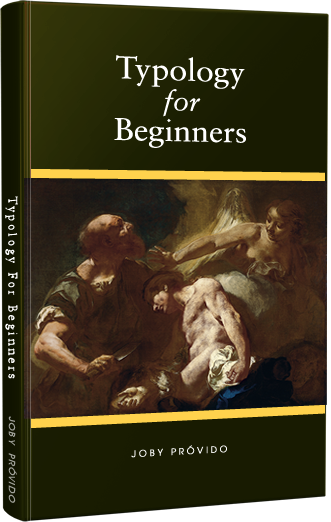
Typology for Beginners
A Catholic Perspective on understanding the New Testament through the Old Testament
First-century Jews converted to Christianity in droves because of the way the New Testament was written to show Jesus was the Messiah promised by the Old Testament. We also learn about how Mary is the New Eve and the Ark of the Covenant in the way the writers portray her.
Through typology, the patterns that connect the Old and New Testaments make the Bible stories more accessible so that one becomes excited to read Sacred Scripture again.
Get your copy now either in Hardbound, Paperback, or Kindle
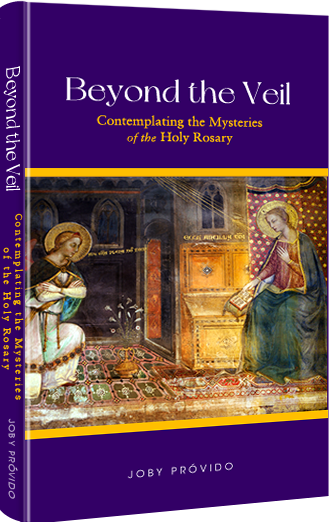
Beyond the Veil
Contemplating the Mysteries of the Holy Rosary
Prayer giants like Pope St. John Paul II, Pope Paul VI, Bl. Archbishop Fulton Sheen, and Bishop Robert Baron advocate that we contemplate on the mysteries of the rosary while we say the vocal prayers. Unfortunately, there are not many books that teach us how to do this. Beyond the Veil comes to the rescue by suggesting seven ways we can pray the rosary the way it was intended.
The larger part of the book offers mental images for each of the mysteries we can use in our contemplation, for how can we imagine the scenes in the rosary if we don't know about them?
Get your copy now either in Hardbound, Paperback, or Kindle
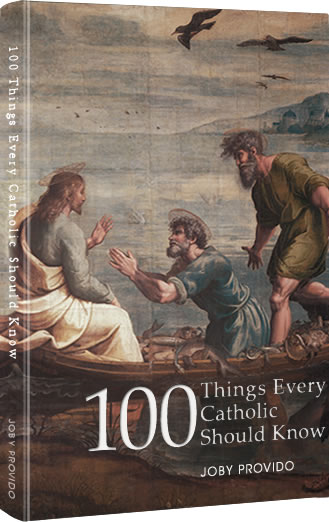
100 Things Every Catholic Should Know
Whether or not you are new to the Catholic Church, or struggling, or lapsed, or dynamically involved, this book will enlighten you with the essentials of the Faith that have been handed down to us by the apostles.
Each of the 100 topics is easy to read and distilled into bite-sized portions. Through cross-referencing, the book also shows how the topics are interrelated. Those who are new to the Faith will find this book an edifying handy reference, and those who have simply forgotten will find it a great review material that might spark a new love for God and religion.
Get your copy now either in Hardbound, Paperback, or Kindle
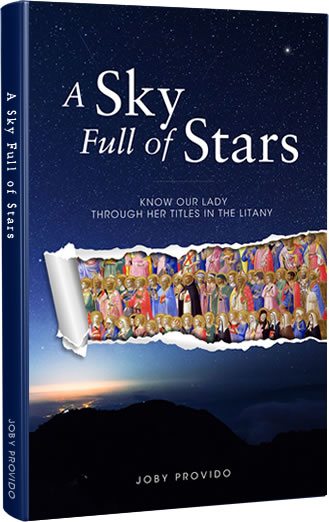
A Sky Full of Stars
Know Our Lady through her Titles in the Litany
The Church helps us understand who Mary is by honoring her with different titles in the Litany of the Blessed Virgin Mary. Unfortunately, over time and difference of culture, we might not grasp what it is the Church is ascribing to her and lose that opportinity to get to know her.
In A Sky Full of Stars, each title of the Litany is explained so we get know Mary more and fall in love with her all over again.
Get your copy now either in Hardbound, Paperback, or Kindle


